#Venezuelan Kinetic artist
Text
Artist Research - Gego
Gertrud Louise Goldschmidt, known professionally as Gego, was a German/Venezuelan visual artist part of the Modern Art movement.

Gego studied at the Technische Hochschule Stuttgart, where she was trained in architecture and engineering, beginning in 1932 and earning her diploma in 1938. She migrated from Germany in 1939 to escape prosecution due to her Jewish heritage. She settled in Venezuela, where she lived for the rest of her life. Gego's artistic career began in the 1950s, when geometric abstraction had become popular in Venezuelan modern art.
Gego's work was distinct due to her background as an architect and engineer. Her work typically featured the use of thin steel wire in delicately crafted lines to create a three dimensional outline of an object. Gego would later describe her work as "drawings without paper".

Sphere(1959) - Gego, painted steel
Gego experimented with kinetic sculpture, a form of still sculpture that would appear to move through use of illusion. The technique, called parallax, is made to make it look like the direction of an object has moved when a viewer look from a different angle at the object.
0 notes
Text

Gertrud Louise Goldschmidt (1 August 1912 – 17 September 1994), known as Gego, was a modern Venezuelan visual artist. #Gego is perhaps best known for her geometric and kinetic sculptures made in the 1960s and 1970s, which she described as "drawings without paper". via Wikipedia
0 notes
Text
Gego
Artist research
Gertrud Louise Goldschmidt known as Gego, was a modern Venezuelan visual artist. Gego is perhaps best known for her geometric and kinetic sculptures made in the 1960s and 1970s, which she described as "drawings without paper".

Gego developed a distinctive approach to geometric abstraction, and this signature style reflects her training in architecture and engineering. Her work is characterized by the use of delicate three-dimensional lines, often made of steel wire. Through their interaction with a complex system of knots, these lines expand into space, both defining a volume and exposing the work's construction.
Gego initiated a series of sculptures with which she attempted to challenge the conventions associated with static artworks. Though her sculptures appear to be in motion, this is an illusion produced by the movement of the viewer. This effect, known as parallax, is particularly evident in Split (1959) and Sphere (1959), two works that use bold graphic lines replicated along different parallels.
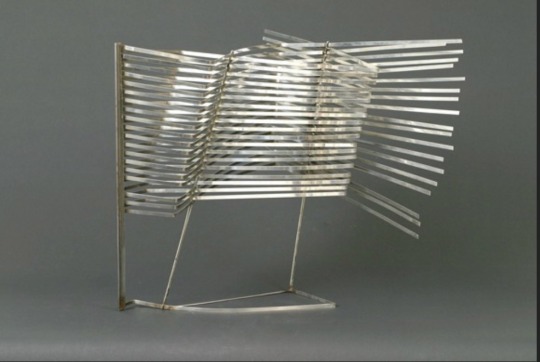

Gego’s large Reticulárea, created at the Museo de Bellas Artes in Caracas in 1969, consists of an expansive, modular wire grid that unfolds into the gallery space across the floor, walls, and ceiling, welcoming visitors to immerse themselves in its disorienting, constellation-like structure. This work marked the beginning of a major chapter in the artist’s career, during which she turned to a series of complex three- and two-dimensional compositions. These have an organic and ethereal character, with fragile, almost precarious grids.
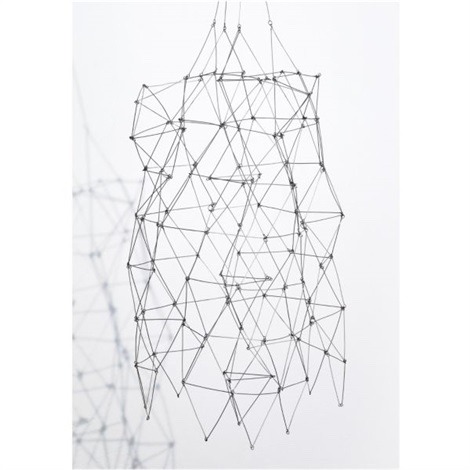
0 notes
Photo

Jesús Rafael Soto (June 5, 1923 – January 17, 2005) was a #venezuelan 🇻🇪 op and kinetic artist, a sculptor and a painter who did this artwork for #paris #orly #airport . He is mainly recognized for his #kinetic art works - works set in motion by a motor, wind, impulse, visual effects -, using the viewer's gaze to set his #art works in motion.His works can be found in the collections of the main museums of the world, including #tate #london , Museum Ludwig (Germany), Centre Georges Pompidou (#paris ), Galleria Nazionale d’Arte Moderna (#roma ) and #MoMA (New York). One of the main museums of art in #venezuela🇻🇪 , in his home town, has his name in tribute to him. (à Musée des Beaux-Arts de Rennes) https://www.instagram.com/p/CoaUU6OL0Un/?igshid=NGJjMDIxMWI=
0 notes
Text

Jesús Rafael Soto
Jesús Rafael Soto, a Venezuelan Op and Kinetic painter and sculptor, was well-known for large-scale geometric works that create optical movement. He employed industrial and synthetic materials such as steel and nylon to produce his trademark sculptures.
Jesús was the oldest of four children born to Emma Soto and Luis Garcia Parra. From a young age, Jesús wanted to help support his family, but art was the most interesting thing to him. He began recreating famous art he found in various books and magazines.
In 1939, at age 16, Jesús started his serious artistic career when he began to create and paint posters for cinemas. In 1942, Jesús received a scholarship to study artistic training at the Escuela de Artes Plásticas y Artes Aplicadas in Caracas. He finished his studies in 1947.
In the 1950s Jesús started to experiment with serial art: art in which uniform elements or objects were assembled in accordance with strict modular principles. His next step was incorporating time and real movement into his pieces. Pictured: Harmonie transformable.

In 1955, Jesús participated in the exhibition Le Mouvement which prompted discussion about kinetic art – art in which movement is a basic element – and the Kinetic Art movement.
In the mid-1950s and early 1960s, starting from his concept of time, matter, and space, Jesús structured the conceptual platform of his “plastic language.” He experimented with kinetic and linear construction, and by the 1960s, Jesús was working exclusively with lines and movement. Pictured: Doble progresion azul y negra.

Jesús Rafael Soto is best-known for his so-called Pénétrables – enormous exhibit works that are remarkable for their illusions of sensory vibrations that invite the spectator to participate in the work. In his lifetime, he created over 25 Pénétrables. Pictured: Pénétrable BBL bleu.

“With his Pénétrables, people were no longer outside the work. Soto successfully created artworks that connect directly with the people… He considered viewers as potential collaborators… The notion that people are essential in any artwork made his work a success.”
#Jesús Rafael Soto#Jesús Soto#Jesús#Soto#Venezuelan Op artist#Venezuelan Kinetic artist#Venezuelan#Op artist#Kinetic artist#Op Art#Kinetic Art#artist
3 notes
·
View notes
Text
“People Realized the Need to Make Connections Along the Whole Spectrum of Art History” - Leon Tovar on Latin American Art
by Kim Cabrera • April, 2021
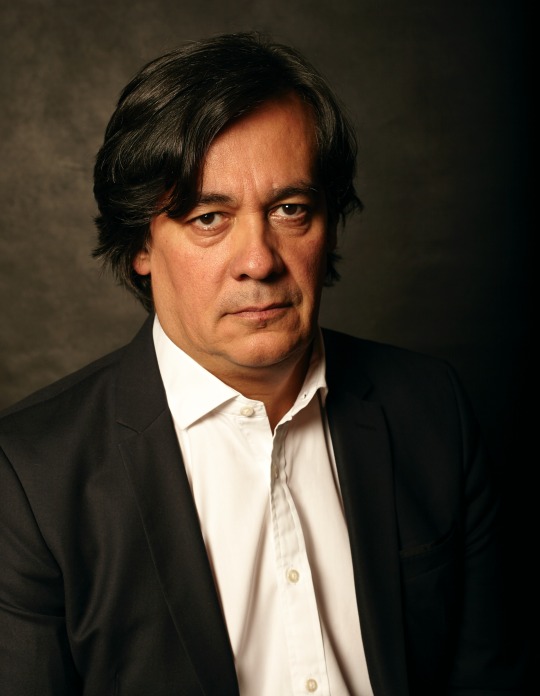
Leon Tovar, photo by Andres Serrano.
-------------------------------------------------------------------------------------------
Leon Tovar has been bringing important 20th-century Latin American art to an American and international audience for years – but that wasn’t always the program of Leon Tovar Gallery. When Leon opened his first space in Bogotá in 1991, he was focused on showing a roster of North American and European artists such as Sol LeWitt, Bernar Venet, and Josef Albers. It was only after moving to New York in 1998 that he realized there was a niche to fill: “I got the idea to make clear the real connections between Latin American artists and broader art history… I started to work here and present important programming featuring Latin American artists in different areas – geometric abstraction, optical, kinetic.”
Now the gallery, which is celebrating 30 years in business, is firmly focused on educating collectors about Latin American art and broadening the scope of the art historical canon.
We sat down to talk with Leon about the need to make cross-cultural connections throughout art history, the responsibilities of dealers and collectors, and the evolving role of digital tools in today’s art world.
When did you first become interested in visual art?
My experience with art started when I was around 7 years old. My father—who was a prominent lawyer in Colombia and a very intellectual person—used to paint over the weekends. And my mother, she always saved money to buy small pieces of art. From the beginning we had paintings on our walls and I was really passionate about that. When I started to paint at 8 years old, I was like a mini artist. And from that period I started to learn to be involved in the arts all my life. I never did anything else; that was my only career from the beginning.
When I was young there was an exhibition at the Museum of Modern Art of Bogotá, and it was one of my first exposures to geometric abstraction and optical art. A Venezuelan artist had been invited by the museum, probably Carlos Cruz-Diez, as he had a show there in 1985. After that, I became really passionate about how people can, with plasticity, communicate and express different ideas.
I went to Andes University to study art history, and when I was probably 18 or 19 years old I did an internship at a gallery in Stockholm. After that, when I was in my mid 20’s, I opened my first gallery in Bogotá in 1991 – as of this year we are 30 years old.
Early on, I was inspired after being invited by Sol LeWitt to his studio in Hartford. For my gallery in Bogotá, I started a program that brought international artists to the Colombian public, because it was difficult for people to go to museums in the States or Europe.

Leon Tovar at Sol LeWitt’s studio in Hartford, Connecticut, late 1980s.
-------------------------------------------------------------------------------------------
How did you meet Sol LeWitt originally?
My sister was also an art dealer, and she was married to a Swedish dealer. Together we started to make a plan for the gallery’s program. As I mentioned, very early on I was impressed with geometry, minimalism. We thought it was really important to bring LeWitt to Colombia.
He was really interested in doing something in Latin America because he had only been in one small show that had traveled to Bogotá, São Paulo, and Rio de Janeiro in 1975 – that was his only approach to Latin America. So, he invited us to his studio in Hartford. I was really impressed because he knew a lot about Latin American artists, especially those that we have worked with for many years, like Carlos Rojas, Eduardo Ramírez Villamizar, Edgar Negret. At that time, those Columbian artists were not even popular in Latin America or their own country.
The first show at the gallery ended up being Bernar Venet and Sol LeWitt.
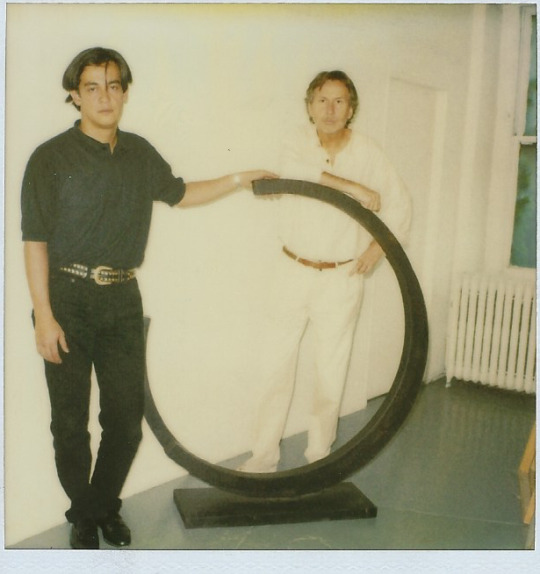
Leon Tovar with Bernar Venet at his studio, New York, 1992.
-------------------------------------------------------------------------------------------
Since those artists didn’t really have exposure in Colombia, did you find that people understood their work right away, or did you have to educate the public about them?
Their work divided people, immediately.
People who knew a lot about color theory, the theories of Josef Albers, understood. And later, we did an Albers exhibition in Bogotá, and people were thirsty to learn. Bogotá was a very well-known city for literature and art, and we have great artists there, but people didn’t have the same access to information. The budgets of museums were very limited.
A lot of people didn’t understand the work. If I sold a wall drawing by Sol LeWitt, and after the buyer received a certificate, and were told they needed to bring people to remake the wall drawing at their own place, they would ask, “Is this real?”
But the press was really good to us back then and we got a lot of articles all over Latin America. Venezuelan collectors started to buy from us. They sent curators to see our exhibitions and that’s why I survived this adventure. People thought it was a great idea to bring New York artists to Colombia and provide the public with access to their work. And on top of everything else, people could purchase the art if they liked it. We quickly became very popular in Latin America.
When you came to New York, did you find that these American artists you had shown in Colombia were already known and represented? Did you have an idea of representing them when you came to New York, or did you plan to bring Latin American artists to the States?
In 1998, I decided to move from Colombia to New York, both to gain another perspective for the gallery and because the situation had gotten so bad in Colombia that it didn’t make sense to continue in Bogotá. I moved to New York with the idea that the program would be more or less the same as it was in Colombia. But when I got here, Bernar was with André Emmerich Gallery, Sol was with Paula Cooper. I knew that now I was in the big swimming pool, and I got it immediately and I didn’t produce any resistance.
So I got the idea to make clear the real connections between Latin American artists and broader art history. Sol taught me there were no walls, no borders. He knew exactly who Carlos Rojas was, and the names of other Latin American artists that only professors knew. Then I understood there were no limits to the gallery’s program. I started to work here and present important programming featuring Latin American artists in different areas – geometric abstraction, optical, kinetic.

Leon Tovar Gallery, East 75th Street, New York. Photo by Peter Baker.
-------------------------------------------------------------------------------------------
Did you feel there was a lot of education you had to do with an American clientele, or do you think there was already an understanding here of Latin American art and its importance?
I had an advantage – I already knew how American artists worked, how European artists worked. I came here and learned a lot in the auction houses. I learned that we need to be very well-prepared with art historical knowledge in order to develop our program because most people have better ears than eyes. We need to explain to people how, why, optical art has been important. Why Yves Klein’s favorite artist was Jesús Rafael Soto. Why the Zero Group had connections with Latin American artists (one of the entrance pieces at the Guggenheim Museum for the Zero Group exhibition in 2014 was a Jesús Rafael Soto work). There are hundreds and hundreds of real connections, and this realization started from this chat with Sol LeWitt.
Museums started to become inspired, and in 2002, there was Body & Soul, one of the first important shows of art from Brazil at the Guggenheim Museum. It was probably among the earliest serious examinations of Latin American art.
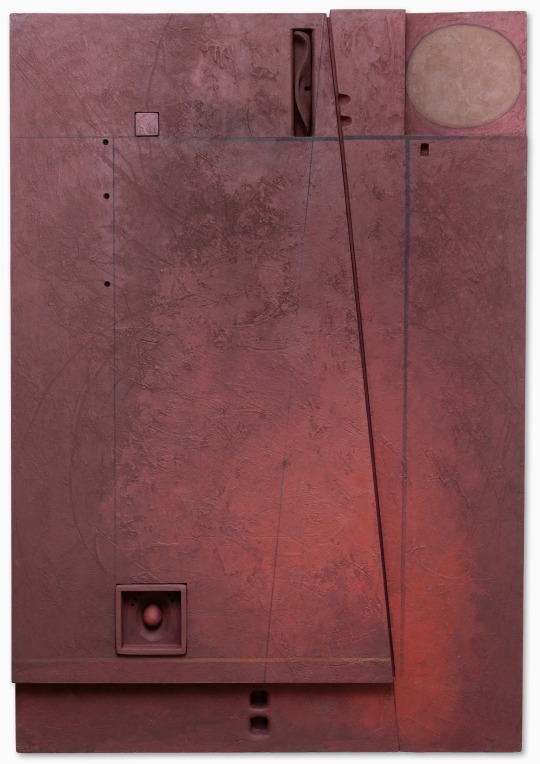
Marcelo Bonevardi, Rampart, 1969, acrylic and charcoal on textured substrate on wood, © Estate of Marcelo Bonevardi.
-------------------------------------------------------------------------------------------
Do you see yourself as filling in gaps in the art historical narrative?
If you’re a collector – a real collector – you need to find complements to your collection.
You can’t build a collection of Surrealists if you don’t include Frida Kahlo, Leonora Carrington, Wifredo Lam, Roberto Matta. You cannot talk about geometric abstraction without Carlos Rojas, Carmelo Arden Quin, Lucio Fontana. You cannot talk about Impressionism without Armando Reverón, Andrés de Santa Maria, because they were Impressionist artists also. If you are a landscape collector, you go to the School of Barbizon, but you also need to see the School of Quito. The light in Bogotá is the same light in Biarritz; the landscape artists have a connection over thousands of miles, even if they don’t know each other.
As a collector, you need to develop this expertise. If you don’t, it’s difficult. The gallery does a lot of work—we have a lot of space to cover, and thousands of collectors don’t have this knowledge of Latin American art. That’s why we started to be important, because people realized the need to make connections along the whole spectrum of art history.

Leon Tovar Gallery at ADAA’s The Art Show, New York, 2020. Photo by Nicolas Manassi.
-------------------------------------------------------------------------------------------
When you come to a new geographic region and you have to build a market for an established artist from elsewhere, you’re really building the market from the ground up. As the business owner, that is a long-term strategy and that doesn’t happen overnight – so here you are, starting a young gallery in the US, and you’re having to create a long-term view for it that may not have immediate financial benefits.
It’s a huge sacrifice. Huge. As difficult as it was to bring Sol LeWitt or Josef Albers to Bogotá in the late 1980s or early ’90s, it was just as difficult to bring artists like Carlos Rojas, or Eduardo Ramírez Villamizar, or Carmelo Arden Quin, or Sergio Camargo to America. And obviously New York is a very competitive city, but we love that type of competition.
Some of the artists we worked with in the beginning didn’t have any museum exhibitions or any really important approval from collectors. Over time we saw that change, and we saw their prices rise. We’re working with the most important of these big artists from Latin America. They are part of the art world, and there’s no room for speculation.
There are of course a lot of people that deal art for passion, knowledge, and education. And when people are really passionate, they never give up, even if they’re not economically successful. Obviously, the economic part is important, because you need to survive. But if you focus on one specific area and develop that knowledge, build the right program with the right artists, this will bring you success, sooner or later. It may take a long time, but don’t be stressed about the economic part because it will come; if you have a serious vocation, people will start to recognize that.

Leon Tovar with Jesús Rafael Soto and Carlos Cruz-Diez, Caracas, Venezuela, 1993.
-------------------------------------------------------------------------------------------
Is there any advice you may have for new collectors?
Like dealers, there are different kinds of collectors.
Some young collectors are interested in collecting because they saw it in their own families and they want to continue the tradition, which is fantastic and beautiful.
Another type of young collector sees a business opportunity. That’s important, too, for the market. But if you want to build a long-term project, and want the dealers and galleries to respect you and give you the best information, you need to act responsibly as a collector. You have privilege, yes, but also obligations to the galleries and to the art that you buy. There are protocols that you need to follow. It’s a big responsibility. It’s more than people think.
If you educate yourself, you will always be a successful collector. You need to learn a lot, read a lot, go to museums. You don’t need to be rich to start to collect. The Vogels are a beautiful example that you can be the best collector ever, just with knowledge. Start now, start as soon as possible. It’s important. If you buy a nice art piece, and you start to build your own collection, that will put you in a position to collect further. Start today.

Leon Tovar Gallery at Bogotá International Art Fair, 2016. Photo by Mateo Saenz.
-------------------------------------------------------------------------------------------
In this past year, a lot of the ways in which art dealers do business has changed. Can you talk about some of the changes you’ve seen, whether positive or negative?
I could spend two hours answering that question. I think today, the most important shift as a result of the current need for digital outreach is that galleries have started to be important again.
Important galleries – no matter their size – will survive, and prevail, because now collectors, more than before, need to have confidence in their dealers. They cannot go to art fairs, and they need to trust in the expertise of the gallery. If people want to buy Latin American art, they would prefer in this case to buy it from us, or from a serious dealer from Latin America, rather than to try to buy things online from someone they don’t know.
Digital tools give us an advantage but can also work against us. At the end of the day, you don’t always have control over the information that’s put out into the digital world. It’s a very risky moment right now in terms of information, and misinformation, too.
But in the pandemic, if you use these tools with level-headedness and with discretion, like we do at the gallery, it’s an advantage. They help a lot. You can do digital exhibitions. But at the end of the movie, galleries will be there forever. I think we are, in our case, using our platforms very responsibly. We don’t want to be aggressive with people because they are fatigued with digital platforms. You need to manage that.
I think you make a compelling and resonant point – while the digital platforms provide access, nothing can replace the value of humanity and personal relationships. And it is the relationships that will ultimately survive this process.
Exactly—it’s the sharing of knowledge. Knowledge is not Google. Dealers need to build experience, to spend the hours, spend your life, your money, your energy, probably your own private life. As a dealer you need to educate yourself, as much as an art historian. When you do this, you dignify the whole ecosystem, with collectors supporting galleries, galleries supporting artists, and artists supporting museums.
You can’t do everything online – that’s why museums postponed exhibitions. It doesn’t make sense to spend millions of dollars to do an online Francis Bacon retrospective. You need to bring people to the museum so they can see why Bacon is Bacon.
We will be back in person eventually, and will also continue making use of digital platforms. But we, at the gallery, will go back to our roots because a year ago we were so crazy and in such a rush. The fairs, the exhibitions, and also the preparation of these events – it’s a huge responsibility, a huge undertaking. Even though we are a small gallery we have a big operation.
Now we’re calmly developing our program. We’ve deaccelerated our process. We are going slower, but we are more precise and focused. You learn to be more selective with your time, and think seriously about what you want to do in the future. The collectors will come to you. If you have good work, they will come.

Leon Tovar greeting the King and Queen of Spain at ARCOmadrid, 2015.
-------------------------------------------------------------------------------------------
In the course of these conversations, themes develop organically. Responsiveness and shifting goals to meet your situation seems to be a theme for you.
It’s a combination of opportunity and resourcefulness – together, this makes you lucky.
We take opportunities. We’re competitive, we’re active, and we know what we’re doing.
100 years from now, 200 years from now, what do you hope will be the legacy of your gallery?
I’d like to think that a crazy, small gallery from Colombia started a project that eventually was developed for universities, for education, for the future. I think that Latin America, as a vast region, has suffered a lot. The artists from these countries make incredible efforts to manifest their own feelings and ideas, and are as important as any other artist in the world.
I think the most important thing is that people realize that knowledge is the key part of our program. We are here – humbly – to educate people about Latin America and the connections that exist between our artists and the rest of the world.
-------------------------------------------------------------------------------------------
All images courtesy Leon Tovar Gallery, New York.
2 notes
·
View notes
Photo
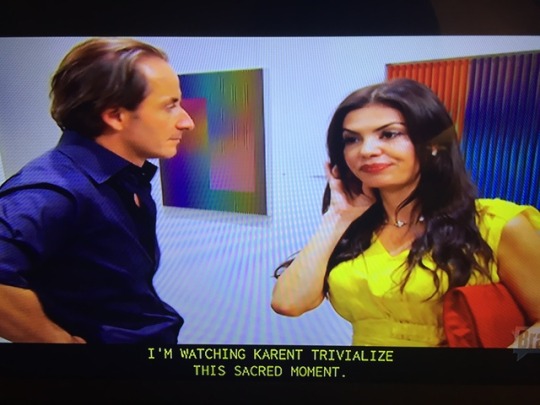


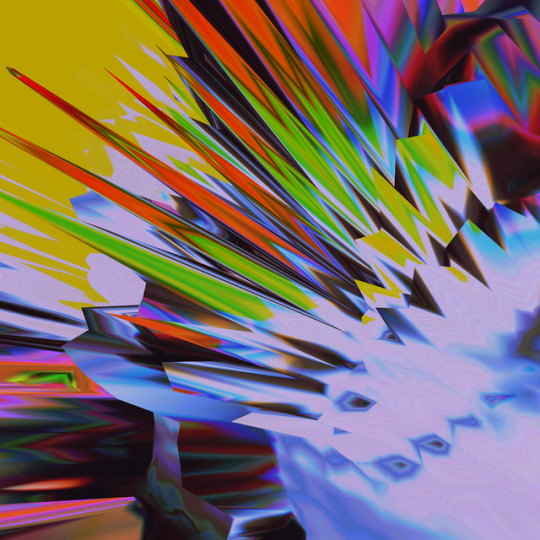

Venezuelan artist and Kinetic Op Art pioneer Carlos Cruz-Diez passed away a few days ago and my favorite thing by him was his appearance in the Real Housewives of Miami (his arts cool too)
#carlos cruz-diez#real housewives#the real housewives of miami#op art#glitch art#aesthetic#kinetic art#pop art#reality tv
35 notes
·
View notes
Photo

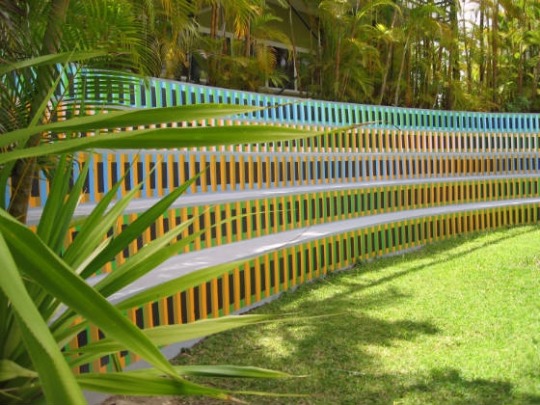

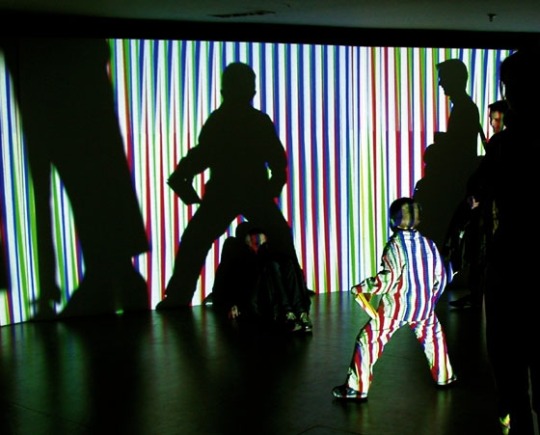
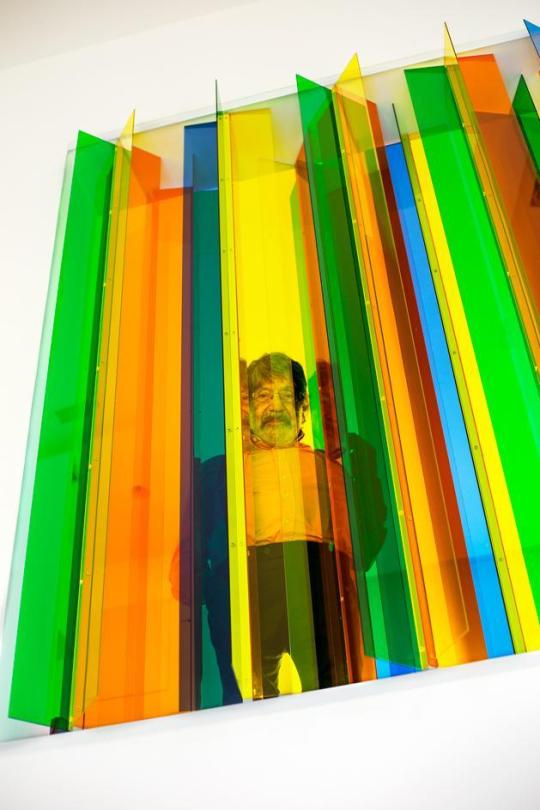
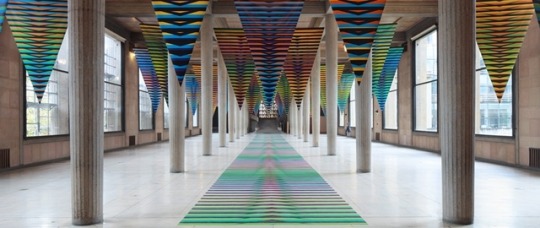
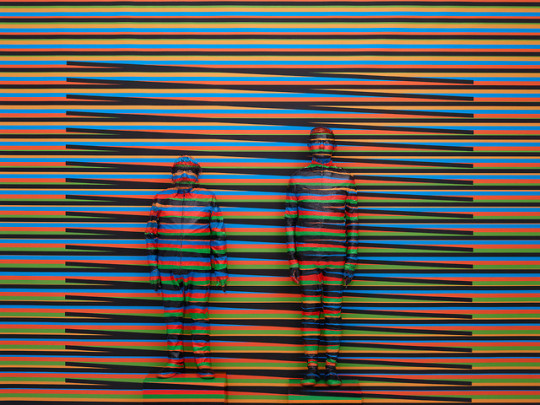
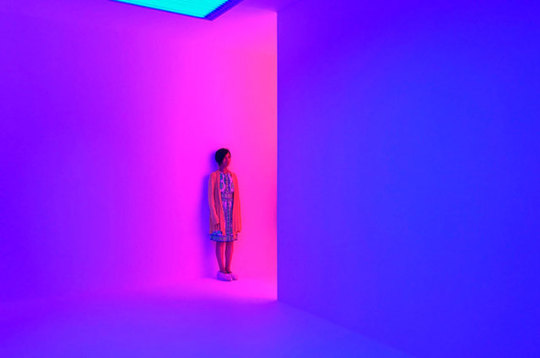
In memoriam: Carlos Cruz-Diez (1923-2019)
Carlos Cruz-Diez, the Venezuelan artist whose experiments with light and colour changed the face of kinetic art, died on Saturday in Paris. He was 95.
#paddle8#carloscruzdiez#in memoriam#rip#artist#kineticart#design#architecture#installation#color#light
17 notes
·
View notes
Photo
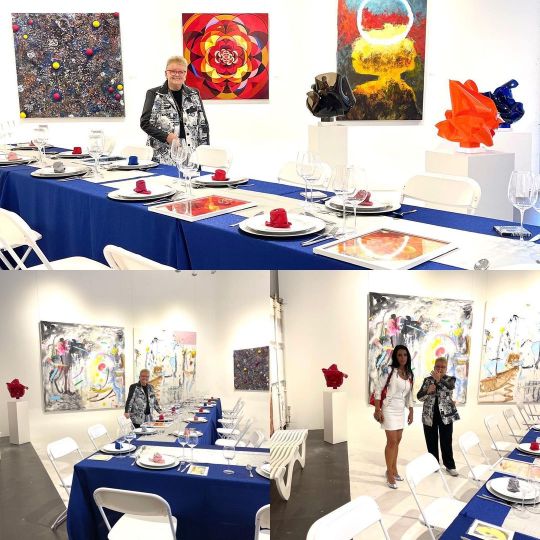
Thank you Noelia Georges for your great collaboration! Here is the Dinner creation by Nohelia Georges @decoaries at our Art Dinner Experience in supporting Senosayuda Venezuelan foundation to help women with breast cancer/ show Nowness The Pandemic Station Thank you! Nohelia! for your passion and your artistic approach to the Dinner setting! @curatorsvoice @senosayuda @senosayudausa @chateauchantewine @decoaries @soria_and_spice @milagrosbellocurator @clark_medley @carolaorietaart @rosariobond @pedrogris.tres @mercedesinaudi_art @ricardocarbonell.art @mjbigshot @gustavoguinandr @rogermariart @ipixelation @loriensuarez @retamalart @quietpencil @disparosaguedella . #miamiart #artoftheday #milagrosbellocurator #nycartists #artbasel #artistsoninstagram #wynwoodart #colorfulart #newyorkartists #galleries #artcurator #artmiami #curatorsvoice #nyc #scopenyc #artwork #artiststudio #galleryarts #kinetics #abstractpainting #florida #artgallery #sculptureart #escultura #photooftheday #miacuratorial (at Miami, Florida) https://www.instagram.com/p/CPJjk3Tp8By/?utm_medium=tumblr
#miamiart#artoftheday#milagrosbellocurator#nycartists#artbasel#artistsoninstagram#wynwoodart#colorfulart#newyorkartists#galleries#artcurator#artmiami#curatorsvoice#nyc#scopenyc#artwork#artiststudio#galleryarts#kinetics#abstractpainting#florida#artgallery#sculptureart#escultura#photooftheday#miacuratorial
0 notes
Text
FLOOD | Barbarous Nomenclature: Devendra Banhart Shows Off His Paintings in His First Solo Art Exhibition
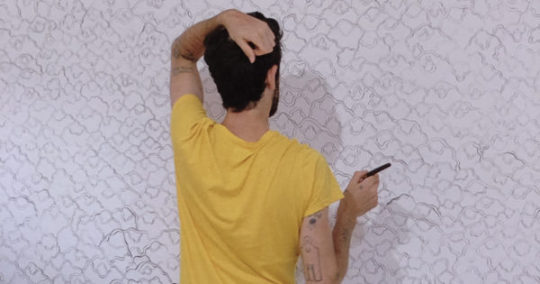
February 19th 2021 by AD Amorosi
photo by Moriah Berger
My adventures with warbling-voiced, Venezuelan-tinged, free associative poet and lyricist ’s work started with Michael Gira’s suggestion that I check out his latest find (2002’s fragmented Oh Me Oh My), winds through Topanga Canyon at manager Eliot Roberts’ urging (for 2005’s Cripple Crow), and ends up sitting calmly with the singer-songwriter’s last three sparer—but no less surreal—efforts (2013’s Mala, 2016’s Ape in Pink Marble, and 2019’s Ma) before gazing up at his latest creation-curation, The Grief I Have Caused You.
This IRL and virtual exhibition of his art—taking place at Nicodim Upstairs in Los Angeles, and standing until March 20, in addition to being accessible online—is not Banhart’s first rodeo where sensual, silly visual art is concerned. Along with drawing and painting the majority of his LP sleeves since his start, Devendra has contributed to Doug Aitken’s multimedia Station to Station project exhibited with other artists in Italy, San Francisco, and Queens, and his monograph of drawings and paintings I Left My Noodle on Ramen Street was published in 2015. The Grief I Have Caused You, however, is Banhart’s first solo art show, an event we discussed as Valentine’s Day was only just starting.
“Visual art came to me through the unconscious absorption of architecture and nature—that was an obsession, the only art that you could see in Caracas,” says Banhart of his start. “I was born into a time of total chaos—economic, political, and humanitarian horror—right at the end of any cultural movement, and there were no galleries there when I was there. Just buildings, which were quite beautiful, a few kinetic sculptures bleeding through the city, and nature; the exception being Carlos Cruz-Diez, whose work was painted onto the streets. It was as if a fleeting few flowers, a representative of consciousness, were sticking through the fields of green.”
Anyone who knows the Disney Concert Hall in downtown Los Angeles knows Cruz-Diez’s work, as one of his most vibrant pieces exist there. “When I first walked there, I got dizzy and nostalgic, it was so powerful,” says Banhart.
Other equally heady influences emerged to affect Banhart’s visual language as much as they would his musical and literary ideals: director Robert Frank’s Pull My Daisy and its take on Beat writing (“Are grilled cheeses holy? Are cockroaches holy?”), the colors of Joan Miro, the creatures of Rufino Tamayo, the thick, squiggly lines of Carroll Dunham, the psychedelic sunbursts of Judy Chicago, and the Mission School in San Francisco all left deep marks on Devendra; as deep as those spirits who haunt and linger with him such as the Tibetan, Nepali, and Bhutanese tonkas and Tantric Buddhist imagery and Japanese floating world imagery. “These inspirations are all explicit in my work.”
“Most of the paintings are just me trying to crack myself up. I’m so horrified and depressed. I have to paint disco bears over the ocean just to cheer myself up.”
Other than ink and oil versus strings, skins, and laptops, nothing separates his visual from his sonic work. “They’ve only been parallel disciplines that meet when it comes time to make, say, an album cover,” he says. “Just like making a record, my paintings and drawings—half of them are characters, half of it is made up and just trying to be self-referential while not exactly being me. Some of it has nothing to do with me or baring my soul, and some of it is extremely intimate. Most of the paintings are just me trying to crack myself up. I’m so horrified and depressed. I have to paint disco bears over the ocean just to cheer myself up.”
What morphed in order to get him to this current exhibition was the desire to get to the end of the repulsion and despair that is this current time period. “I’m drowning in despair, the reality of this uncertain time—a new texture of depression—so you paint or draw your way out of it.”
The other reason Banhart claims to have waited this long for a solo show is that the stigma of a musician also making visual art has lingered throughout his tenure as an artist. “Galleries pretty much shut the door in my face for over ten years, the same way labels did when I first started out making music. And just like music, it was nice, after so many years, that somebody opened a door and replied. I actually had given up on getting a solo show of my work, and just kept painting—which is exactly when it all came to fruition for me to get my own show. It’s funny how things work out.”
“It’s nice seeing people experience the work without any preconceived notions or baggage—so many people only just found out that I am not an Indian woman.”
Banhart adds one quick, funny thought to this display and discussion of The Grief I Have Caused You exhibition. “Then again, perhaps I haven’t been that good of a visual artist,” he says with a laugh. “You always have to leave room for that possibility.”
Considering that this exhibition—outside of its virtual iteration—is distanced and sparsely attended allows viewers the opportunity to truly see that which Banhart is making apparent. “It’s less of a party setting than most exhibitions,” he says. “I always know that whenever I go to an opening, I have to come back later to actually see the work. This time, now, you can concentrate. You can connect with the work. It’s far more intimate. Plus, it’s nice seeing people experience the work without any preconceived notions or baggage—so many people only just found out that I am not an Indian woman.”
With that, Banhart discusses a few of the objects that line the walls of The Grief I Have Caused You, the collaboration with Nicodim Gallery. Most of the pieces were crafted throughout 2020 and 2021, and the exhibit includes some of his earliest works in oil (“Because I’m rarely home long enough to paint”), several of which have no title as yet.
“Niama and Dawa,” 2021
Banhart: That is, I hope, a look at funny repulsion. This painting is a direct reference to a particular Japanese print of two lovers, pretty much a copy. The original print itself is very famous, very ubiquitous in Japan. They’re very beautiful. Very tender, sharing this nuanced love, so I made it…horrific; horrific to the point of having just a modicum of humor.
There is an illustration without a title that looks like two triple sets of legs in high heels. Or flowers.
Banhart: That was certainly influenced by Judy Chicago. Very much so, and explicitly, I’m embarrassed to say. Maybe I’m showing all of my cards here. I like this idea of a disco mandala emerging from the dark.
There is a painting with no title, with splotches of red that looks like an angel with a pompadour jumping into a high heel.
Banhart: That is the naked bear-creature doing a disco dance over the ocean. I’m painting until I hear some sort of music; painting until I hear laughter; painting until I feel a little bit better. This is kind of a lowest rung of consciousness in terms of how little it tries to hide what the image represents. There is an ocean of despair, and I’m just painting this free, naked, dancing creature just trying to get over the darkness. It’s really dumb, but it is utilitarian in its stupidity. I love your pompadour description, too.
“Barbarous Nomenclature,” 2021
Banhart: That was originally going to be the title of this new show. This painting is maybe the very first of this series where I worked through its creation, worked through something. I didn’t really stop painting this piece until the repulsion became comical to me. The fact that there are sports involved is personally quite funny because that was a huge source of shaming when I grew up as an effeminate boy with a strange name in Venezuela who couldn’t give a shit about sports. It’s hilarious that I threw that in here, a nod to my youth. That’s also the most worked on painting until that initial wave of disgust and repulsion turns into something relatively comical. I also like the idea of the expressions of these portraits trying to…this is the liminal, borderline state between agony and ecstasy. Is it disgust, or a blissful moan state? That’s the goal in terms of every single portrait in this show. FL
Browse some more of Banhart’s untitled works below.
· Gallery View ·
This content was originally published here.
0 notes
Photo

Transchromie Mécanique Aléatoire by Carlos Cruz-Diez
Inside the boutique, shoppers will be drawn to the focal point of the flagship—artwork titled Transchromie Mécanique Aléatoire by the Venezuelan artist Carlos Cruz-Diez. Cruz-Diez is known for his kinetic and optic aesthetic which is evident in this piece. Through the artwork’s moiré effect, Cruz-Diez is able to create a sense of motion while also catalyzing an immersive visual experience through color. There is a synergy and continuity between the composition of Cruz-Diez’s work and the linear elements of the façade.
© Eric M. Townsend
#creativity#longchamp#longchampfifthave#olympictower#opening#boutique#nyc#newyorkcity#fifthavenue#usa#carlos cruz diez#transchromie#art#artist
2 notes
·
View notes
Photo

Jesús Rafael Soto (1923 - 2005) was a Venezuelan op and kinetic artist, a sculptor and a painter. Pictured here is his “Penetrable BBL Blue 2/8” on the grounds of the Perez Art Museum Miami @PAMM - The massive metal structure with blue, vertical hanging, flexible plastic strands invites the viewer to step inside it and walk through it for a playful experience. Scroll through the photos and see views from the inside against the Miami skyline. Long-term loan from Juan Carlos Maldonado.
📷 @alice__lowe for the @ArtandDesignMatters
Florida Art Crawl
www.ArtandDesignMatters.com
Visit Miami’s flagship art museum and learn about international modern and contemporary art located at 1103 Biscayne Boulevard: www.pamm.org
#admFloridaArtCrawl #admMuseumSupport #ArtandDesignMatters #admSupportsTheArts #LetsGoToTheMuseum #ArtHistory #ArtHistorian #ArtCurator #MuseumCurator #museum #PerezArtMuseumMiami #PAMM #PerezArtMuseum #VisitMiami #VisitFlorida #CultureTrip #CultureTravel #CultureTraveler #art #artist #artoftheday #photooftheday #instaart #instagood #kinetic #VenezuelanArtist #Penetrable #instatravel #Miami #Florida
(at Pérez Art Museum Miami)
#instagood#perezartmuseum#instaart#arthistory#artcurator#culturetrip#artanddesignmatters#art#artoftheday#letsgotothemuseum#culturetravel#miami#venezuelanartist#kinetic#culturetraveler#florida#museum#admsupportsthearts#visitflorida#instatravel#artist#admfloridaartcrawl#perezartmuseummiami#visitmiami#admmuseumsupport#pamm#penetrable#arthistorian#photooftheday#museumcurator
1 note
·
View note
Photo

Soto’s distinctive aesthetic and rigorously inventive approach to art is certainly rooted in his biography. Born in Venezuela in 1923, Soto moved to Paris in the early 1950s aged 27 where he encountered the works of leading avant-garde artists such as Alexander Calder and Marcel Duchamp. Deeply influenced by the works of Piet Mondrian, to whom the inverted quadratic shape of the present work pays homage, Soto set out to create extensive three-dimensional forms that were utterly revolutionary in their illusory effect. In its intricate sense of space and movement, the present work already predicts his later kinetic relief constructions, which would gradually metamorphose into autonomous environments. Please feel free to contact us with questions or for further information at 305-576-0256 or [email protected] ________________________________________________ Jesus Rafael Soto [Venezuelan 1923 - 2005] Plata Vertical Painted metal signed, titled and dated Soto 1969, Plata Vertical on the reverse 83 1/8 x 32 3/4 x 5 3/4 In. [211.2 x 83.2 x 14.6 Cm.] Painted in 1969 PROVENANCE Private Collection Gary Nader Art Centre, Miami EXHIBITIONS Vapor and Vibration: the Art of Larry Bell and Jesús Rafael Soto, 3 May- 30 Sep 2018, Tampa Museum of Art, USA @nadermuseum #garynader #nader #naderartmuseum #boteroonlincolnroad #masters #espaciobotero #josemariacano #luna #sorayaabunabaa #botero #artbaselweek #miamiartweek #art #artlovers #Fernandobotero #botero #jesusrafaelsoto #Colombian #garynaderartcentre #nadermuseum #nader #art #soto #maestro #masters #sculpture #paintings #drawings #artlovers #stayhome #quedarseencasa #PutOnYourMask #StaySafe (at Gary Nader Art Centre) https://www.instagram.com/p/CAtdsGhgg1u/?igshid=1xc8dik1zf3uw
#garynader#nader#naderartmuseum#boteroonlincolnroad#masters#espaciobotero#josemariacano#luna#sorayaabunabaa#botero#artbaselweek#miamiartweek#art#artlovers#fernandobotero#jesusrafaelsoto#colombian#garynaderartcentre#nadermuseum#soto#maestro#sculpture#paintings#drawings#stayhome#quedarseencasa#putonyourmask#staysafe
0 notes
Text
Gallery Chat with María Inés Sicardi and Allison Armstrong Ayers on Running Texas’ Premier Gallery for Avant-Garde and Contemporary Latin American Art
By Stephanie Strasnick
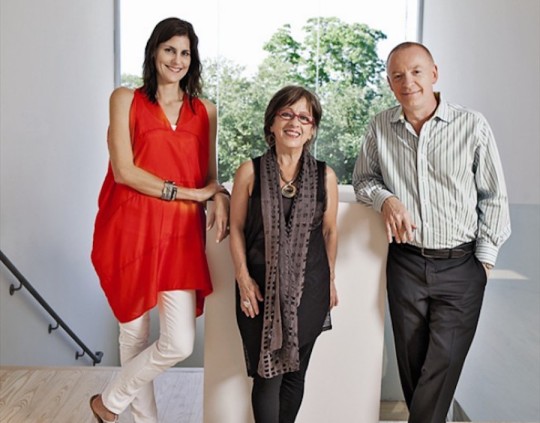
From left to right: Allison Ayers, María Inés Sicardi, Carlos Bacino. Courtesy Sicardi | Ayers | Bacino, Houston.
In the early 1990s, Argentine-born art aficionado María Inés Sicardi noticed that her new home of Houston, Texas, was devoid of art spaces dedicated to avant-garde and contemporary artists from Latin America. In 1994, Sicardi corrected this contemporary-art oversight by opening her gallery, which shines a light on both emerging and established Latin American artists.
In the years since the gallery’s 1994 opening, much has changed for Sicardi: she formed a partnership in 2000 with Allison Armstrong Ayers and Carlos Bacino. In 2012, the group built a 5,900-square-foot complex designed by Brave Architecture. The new building, located across from the Menil Collection, allowed the gallery more space for exhibitions.
Now known as Sicardi | Ayers | Bacino, the gallery has participated in art fairs and exhibitions around the world and has an impressive roster of Modernist masters and acclaimed figures in contemporary art, such as Liliana Porter, Miguel Ángel Rojas, and Gabriel de la Mora.
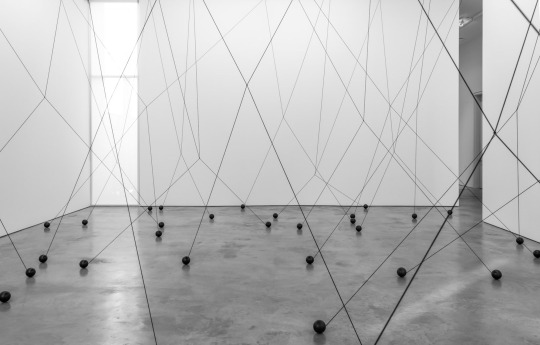
Installation view of “Magdalena Fernandez: Flexible Structures,” 2015. Courtesy Sicardi | Ayers | Bacino, Houston.
On view through the summer, the gallery presents a solo exhibition from Texas-born artist Thomas Glassford, who is best known for his architectural installations made from everyday materials, like plates and broomsticks and gourds. Later this year, the team will honor the late Mercedes Pardo—a Venezuelan artist recognized for her abstract paintings and works on paper—with a solo show.
We recently spoke with two members of the team—Sicardi and Ayers—about their 18-year partnership, the benefits of establishing an art space in Houston, and what’s next for the gallery.
Tell us about your background and how you first become interested in the art world.
Sicardi: I am originally from Buenos Aires, but I’ve been in the U.S. for 29 years. I studied art in college and when I moved to Houston, I knew I wanted to do something related to art. I opened the gallery in 1994. We specialized in Latin American art because I felt there was a need for it given the connection between Latin America and the United States. Houston, to me, was the natural bridge.
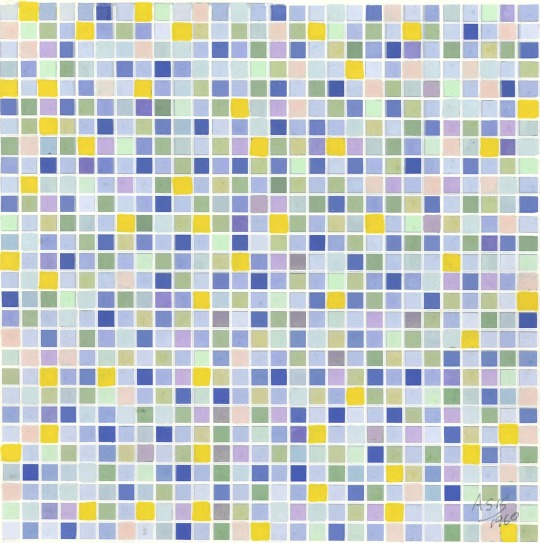
Antonio Asis, Untitled, 1960, gouache on paper. Courtesy Sicardi | Ayers | Bacino, Houston.
What was the gallery like in those early years?
Sicardi: The gallery space was very small in those days. I worked closely with a photography curator during this time and connected with galleries from Buenos Aires and Mexico. We moved to a larger space in 2001, months after the gallery became a partnership. This move gave us the possibility to start showing masters. We opened the space with Taller Torres-Garcia. This allowed us to create a dialogue between the younger and older generations of artists. Many of the artists I found through my extensive travels during this period still work with the gallery. I discovered them through museum exhibitions, studio visits, and word of mouth.
Ayers: A lot of people don’t realize that for the first six or so years of the gallery, we only worked with contemporary artists. A lot of people only associate us with the master artists we represent. We have worked with Oscar Muñoz, Liliana Porter, and Pablo Siquier since the late 1990’s.

Installation view of “Carlos Cruz-Diez: La Autonomia del Color,” 2017. Courtesy Sicardi | Ayers | Bacino, Houston.
Alison, how did you come to art as a profession and when did you join the business?
Ayers: I have a minor in art history and after college ended up going into advertising and marketing. I did that for several years and it was during that time that my husband and I met María Ines. That was in 1996 and the following year I began working on marketing and editorial projects for the gallery. In 2000, we became partners.
When did your third partner, Carlos Bacino, join? How did you meet?
Sicardi: Carlos came into the gallery one day and expressed a great interest in art. He loved it and started to come back every Saturday and collected work bought from us. He is from Argentina and brings a really sharp, rational business prospective. Though I started the business on my own, I wanted to have partners since I’d had a positive experience with a partner back in Buenos Aires. I also felt that it was impossible to accomplish what I had envisioned for the gallery alone. I wanted to make the gallery larger and share my experience, and it has worked out very well with Carlos and Allison. Both he and Allison have been with me since 2000.

Installation view of “Masters,” 2018. Courtesy Sicardi | Ayers | Bacino, Houston.
With three different partners—and opinions—in the mix, how do you create a consistent program?
Sicardi: The gallery has carefully defined its line of work through the years. In the beginning, we were showing younger artists from South America. Once we became a partnership, we added masters to the programming. And, after a trip to Venezuela, we began to incorporate a group of artists who focused on kineticism and geometric abstraction. These artists were based in Paris and South America.
Ayers: We each bring different things to the table. My husband is a lawyer and is very involved with the gallery. His practical business background and research is instrumental to our program. Carlos, who is a geneticist, brings his practical and business background to the group as well. We all balance each other. We’re not going to agree on everything, but one thing we have to agree on is that we won’t show an artist unless we have full approval from the group. We’ve had many wonderful experiences and feel fortunate to work in a field that has seen so much growth and international recognition.

Luis Tomasello, Atmosphère chromoplastique No. 1014, 2012, acrylic on wood. Courtesy Sicardi | Ayers | Bacino, Houston.
Because you show primarily international artists, do you find that your collector base is mostly international as well?
Ayers: Given the nature of what we do, our client base has always been a combination of American and Latin American collectors, institutions, and museums from the United States and abroad. We’ve had a lot of success locally, in Texas. One thing that’s special about Texas is that everyone has been so welcoming, so open-minded. Houston, in particular, is amazing—it’s the fourth largest city in the country, has a large international population, and is home to really great museums and patrons.
Sicardi: We have many collectors from Latin America and the United States. We’ve participated in Art Basel Miami Beach and The Armory Show for more than ten years, which has allowed us to expand our base in the Latin American countries, the United States, and Europe.

Installation view of “Marco Maggi: Putin's Pencils,” 2017. Courtesy Sicardi | Ayers | Bacino, Houston.
Can you tell us about your upcoming exhibitions?
Ayers: We are working on a solo exhibition for Mercedes Pardo in September. Mercedes was married to the Venezuelan kinetic artist Alejandro Otero and has an amazing body of work that has not had much exposure in the United States. We will also screen a new video by the Colombian artist Maria Fernanda Cardoso. A little later in the fall we will show Miguel Ángel Rojas and Manuel Espinosa.
What advice do you have for working artists today?
Sicardi: My advice to artists would be for them to do what they feel that they need to do and not focus too much on the market—that’s very important. The work itself matters, not just selling and marketing it.
Ayers: Chose a dealer who understands you and with whom you can have communication. We believe in making a long-term plan with our artists and working on all aspects of their career.

Thomas Glassford, Labrys, 2018, lacquer on MDF. Courtesy Sicardi | Ayers | Bacino, Houston.
Advice for new collectors?
Sicardi: Similar to my advice for artists, I think it’s important for collectors to follow their intuition and realize that knowledge is the key to building a good collection.
Ayers: For new collectors, I’d advise seeing as much as you can, educating yourself, taking notes, asking questions, don’t ever feel like you have to buy impulsively. It should take time to build a collection.
What would you say to someone interested in starting her or his own gallery?
Ayers and Sicardi: Surround yourself with a good group of people and know that you can’t do everything yourself. You need professionals in all areas and you must have a long-term plan.
6 notes
·
View notes
Photo
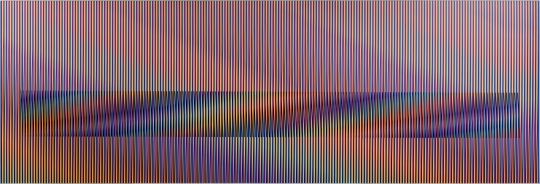
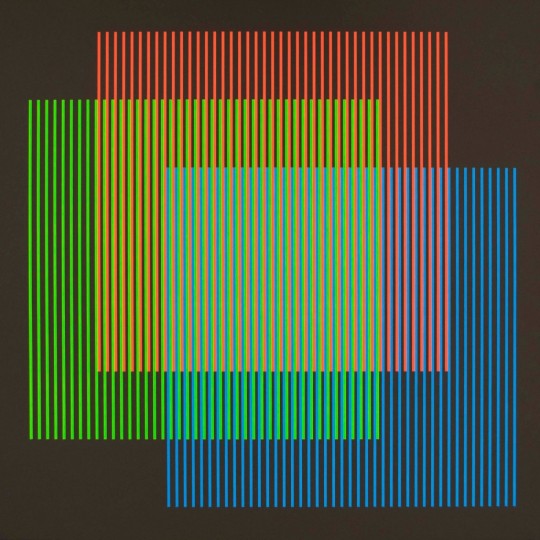

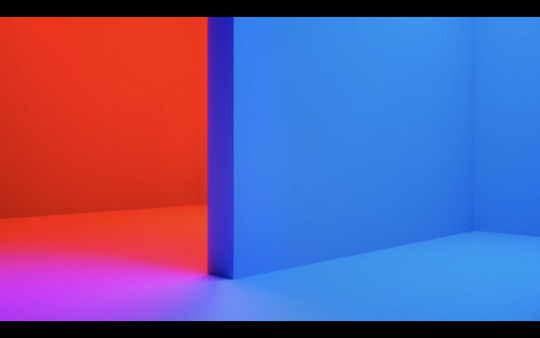
Carlos Cruz-Diez
Carlos was a French Venezuelan artist who played a main role in the field of Kinetic and Optical Art. these movements were about “an awareness of the instability of reality.” He was established as one of the key 20th and 21st century innovators as the master of colour. His art explored perception and the chromatic phenomenon of colour as an autonomous reality evolving in space and time, unaided by form or support, in a perpetual present which develops in real time and space.
His research into the additive, reflective, and subtractive effects of colour, shows that perception of a chromatic phenomenon does not rely on form. Beyond his formal research, colour is an experience in itself that can be perceived and enjoyed without interpretation or knowledge. Through interaction, the viewer becomes an accomplice to the artist, an essential participant in the artwork itself.
“I want people to realise that colour is not a certainty, but a circumstance,” he said in 2014. “Red is maybe red. It’s not the same if you hold an object under the sun as when you hold it in the shade.”
His Physichromie series, (meaning physical colour), you can find additive and subtractive colours which by adding transparent colour plates, they subtracted the colour inscribed in the background.
His Chromosaturation installations, when someone entered into a red chamber, everything would change like their skin, the clothes and so did the environment. There is an interesting phenomenon (Carlos had also read about the physiology of vision), “it’s us through our organism, our physical attributes who manage to see and enjoy those colours which are neither painted nor present there, we create them.”
The colours of light and the ones that let us discover and build the whole universe are red, green and blue. The colours of light are red, green and blue which are the three physical colours in the light spectrum and the colours that the cones in our eyes are sensitive to.
When a viewer enters one of the three rooms they find themselves in absolute monochrome that is to say they can see only one colour however their eyes and brain are made to perceive a wide range of shades of light and the monochrome environment troubles them. So, when the viewer is in a room saturated with blue light, their eyes cancel out the visual noise that is the unique colour in the room , the colour loses its intensity and becomes lighter, if the viewer turns around to look at the red room, they will perceive it as much more saturates than the room they are in, and also see a more intense mixing of the two shades
Carlos observed this sensation when he was young. once he was in the countryside in Venezuela in the plains, it was August when the weather was very hot and humid, the phenomenon that happens during sunset, the sun of the deer, everything turns orange, the colour of the plants, the skin, the clothes, everything, the space the sky, everything is covered in a bright orange.
0 notes